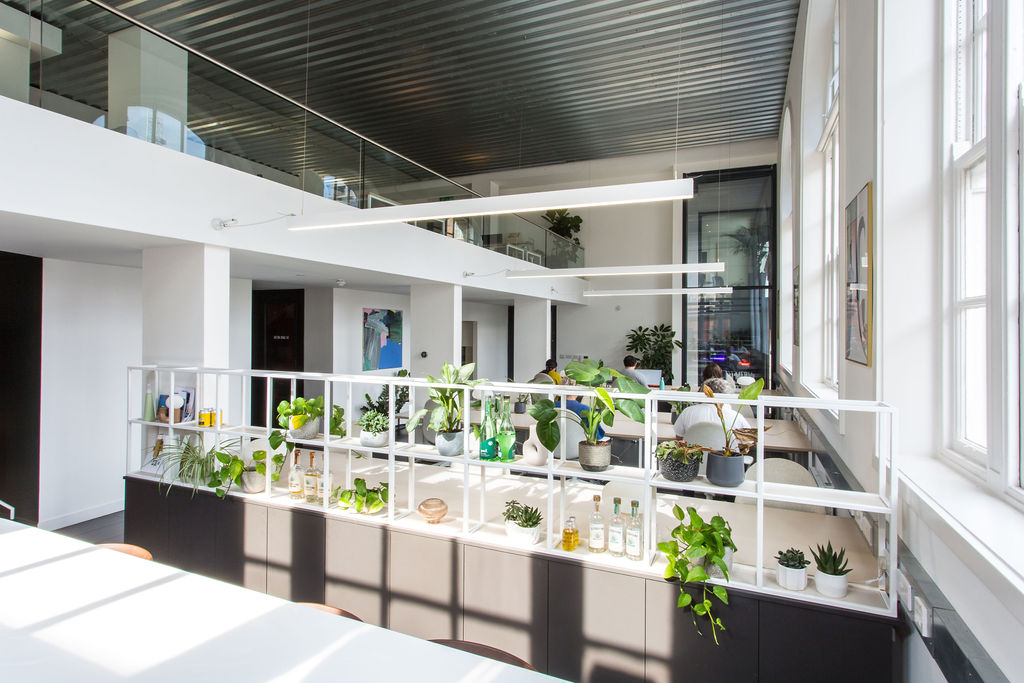Here at Select Interiors, we have found managing acoustics crucial in creating productive and comfortable office environments for our clients. Excessive noise can be a significant distraction, impacting employee focus and overall well-being. To help you strike the right balance, here are ten top tips for effectively managing office space acoustics:
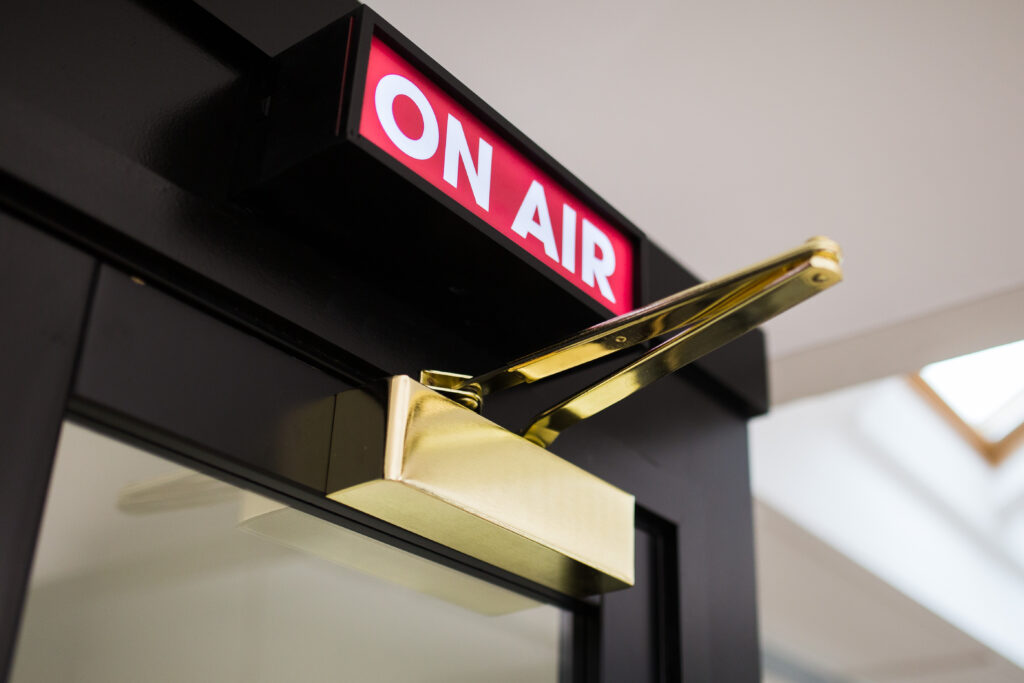
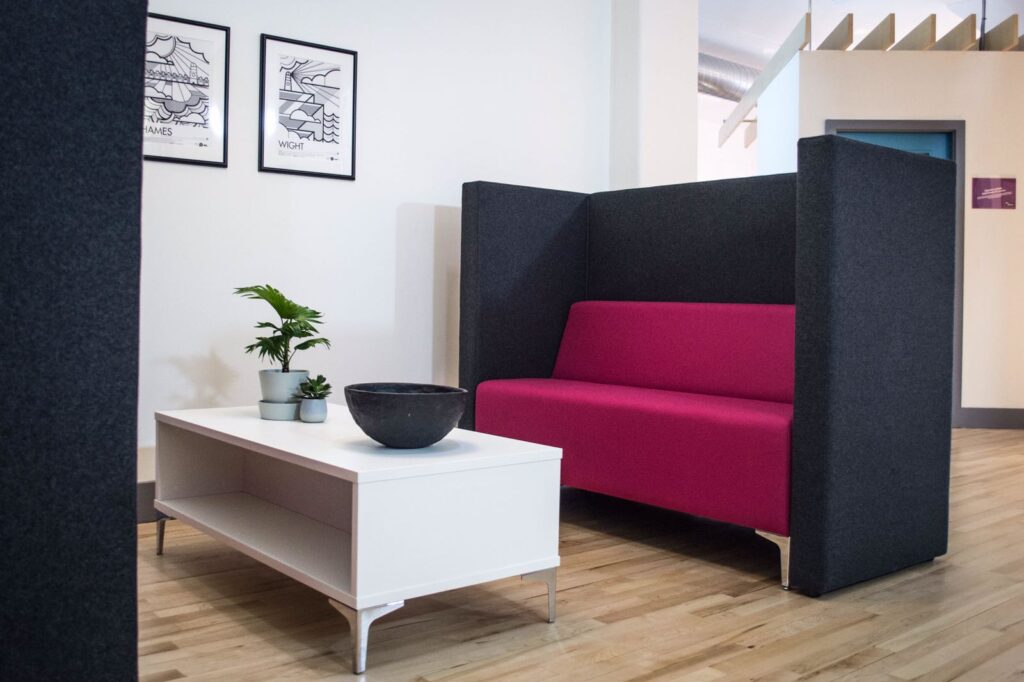
Office Space Acoustics Design Tips
1. Strategic furniture placement:
Arrange furniture strategically to act as natural sound absorbers. Consider placing upholstered furniture, such as sofas and chairs, in areas where noise needs to be minimised. This simple step can contribute to a quieter and more pleasant work atmosphere.
2. Use of soft materials:
Integrate soft materials like curtains, carpets, and acoustic wall panels in your office space design to absorb sound and minimise reverberation. Soft materials help prevent sound from bouncing off hard surfaces, reducing overall noise levels and creating a more comfortable work environment.
3. Acoustic wall panels:
Install acoustic panels on walls to absorb sound and improve speech intelligibility. These panels come in various designs and enhance aesthetics while effectively managing acoustic performance in different office areas.
4. Ceiling treatments:
Implement acoustic ceiling tiles or clouds to absorb sound and reduce noise transmission between floors. Suspended baffles or clouds can be particularly effective in open office spaces, creating a more controlled acoustic environment.
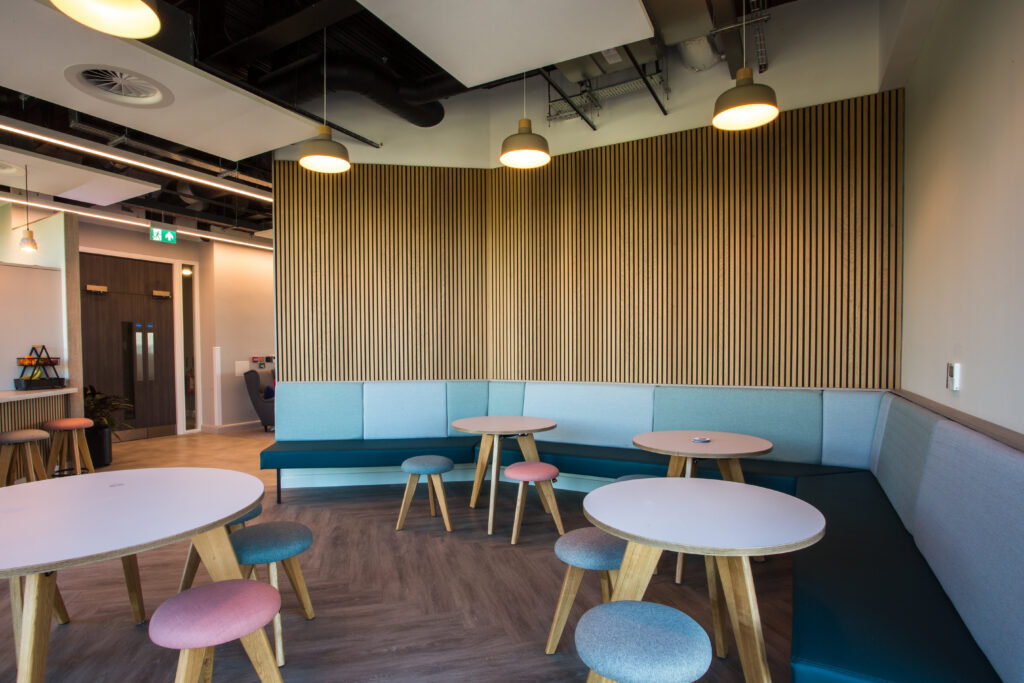
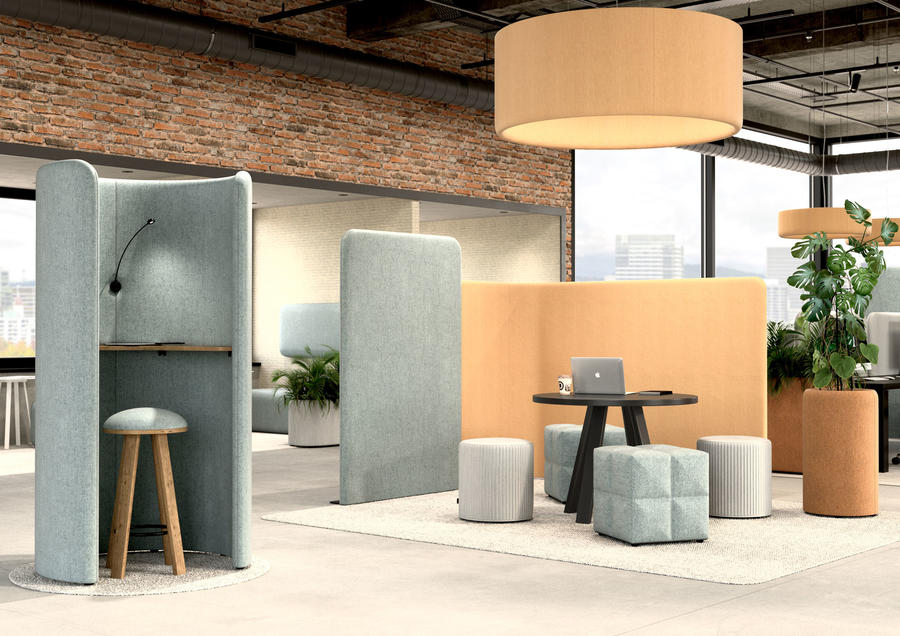
5. Desk dividers and screens:
Utilise desk dividers and screens to create semi-private workstations and screen off informal meeting areas. These additions offer employees a sense of privacy and help block direct sound transmission, reducing distractions in shared workspaces.
6. Carpeting and rugs:
Choose carpets or area rugs with thick and dense fibres to absorb footfall noise and minimise sound reflections. This is particularly beneficial in high-traffic areas or open plan office layouts where noise from footsteps can be a concern.
7. Plants and greenery:
Incorporate plants into the office space as natural sound absorbers. The leaves and branches of plants break up sound waves, reducing noise levels while adding a touch of nature to the workspace.
8. Flexible seating arrangements:
Implement flexible seating arrangements to accommodate different work styles and preferences. By distributing employees throughout the office space, you can minimise the concentration of noise in specific areas, contributing to a more balanced acoustic environment.
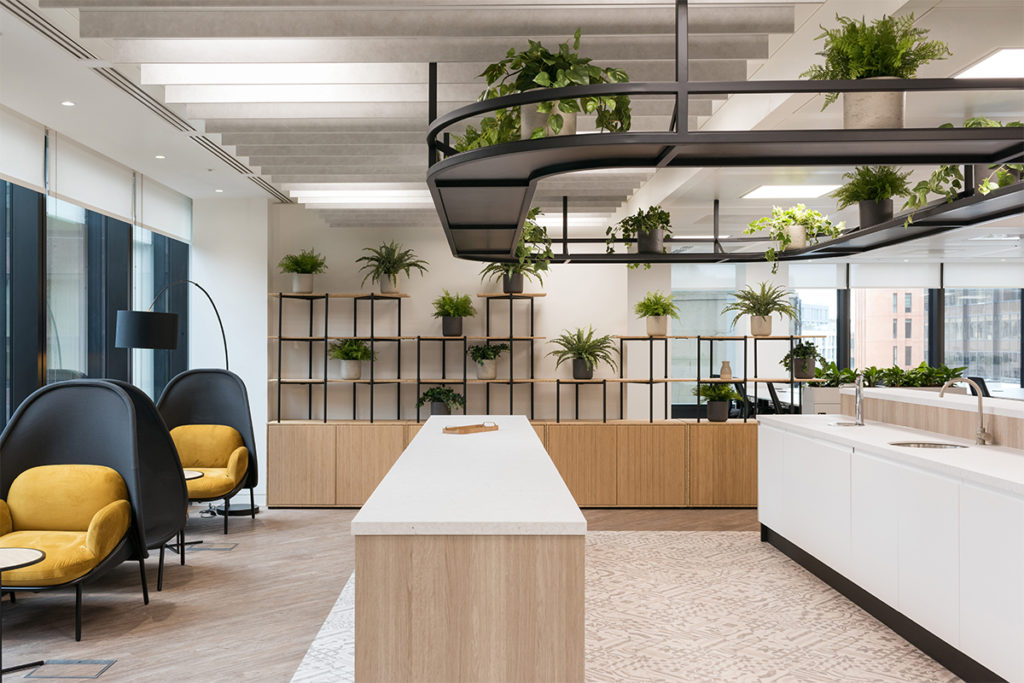

9. White noise or sound masking systems:
Use white noise machines or sound masking systems to add low-level, constant background noise. This can help mask distracting sounds and improve office acoustics without disrupting employees.
10. Enclosed meeting spaces:
Design enclosed meeting spaces with proper acoustic insulation to prevent sound leakage. Utilise soundproof materials for walls, partitions and doors to ensure that confidential discussions remain private and free from external disturbances.
A survey revealed that 60% of employees were unable to concentrate due to excessive noise in the office space.
By integrating these tips, you can create an office space that not only fosters productivity but also prioritises the well-being of your employees.
We instinctively know how to strike a perfect balance or style, design considerations, planning issues and your ideal work environment – so contact us today and let’s work together


